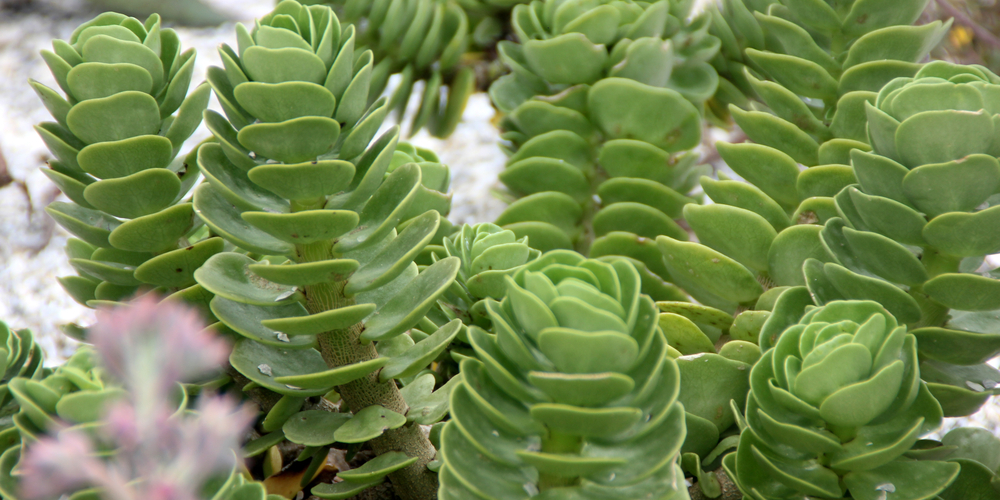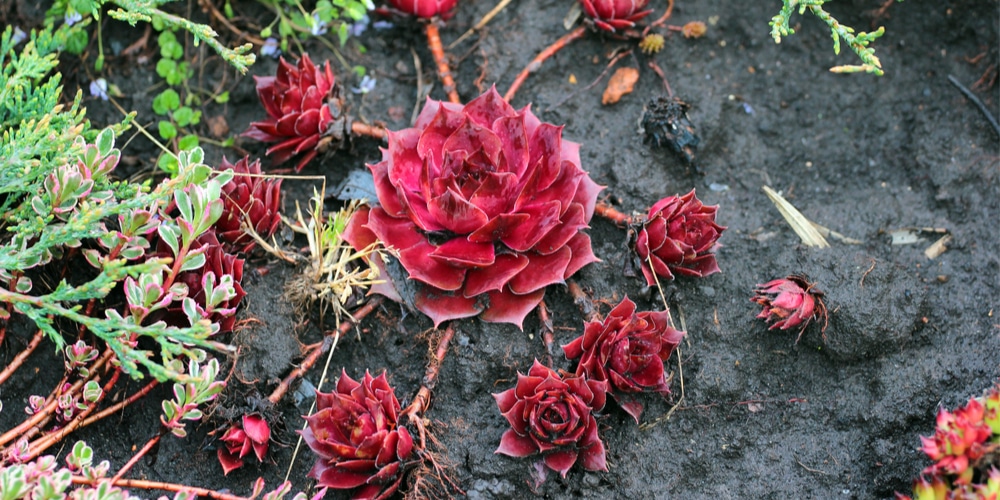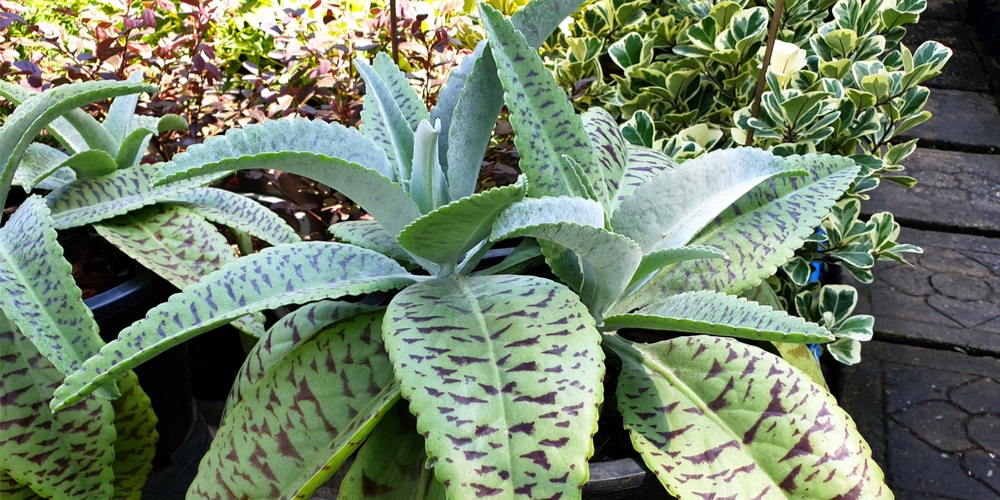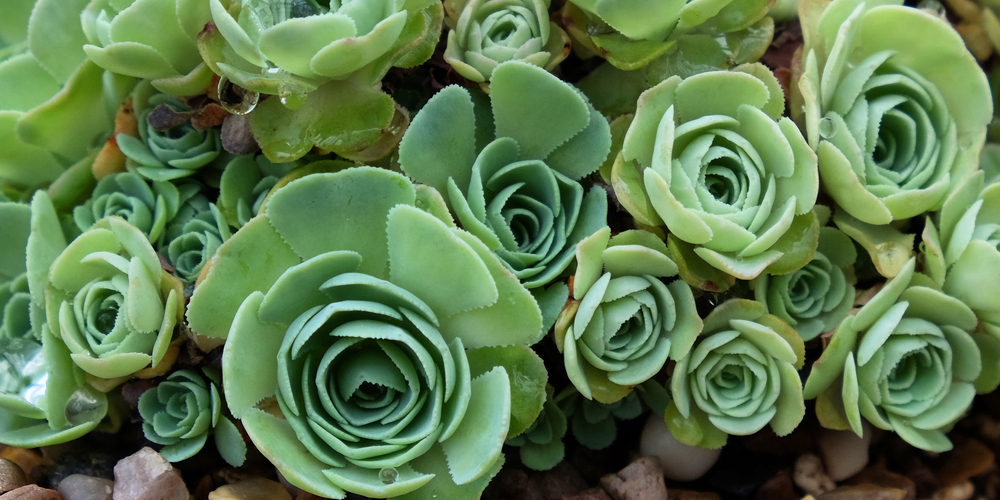Zone 9 gardeners will have plenty of choices when growing succulents in their area. Both soft and hardy varieties should be able to adapt and survive, with soft succulents needing to be moved indoors for the winter.
Here are 7 of the best zone 9 succulents you can find today.
Aloe Vera
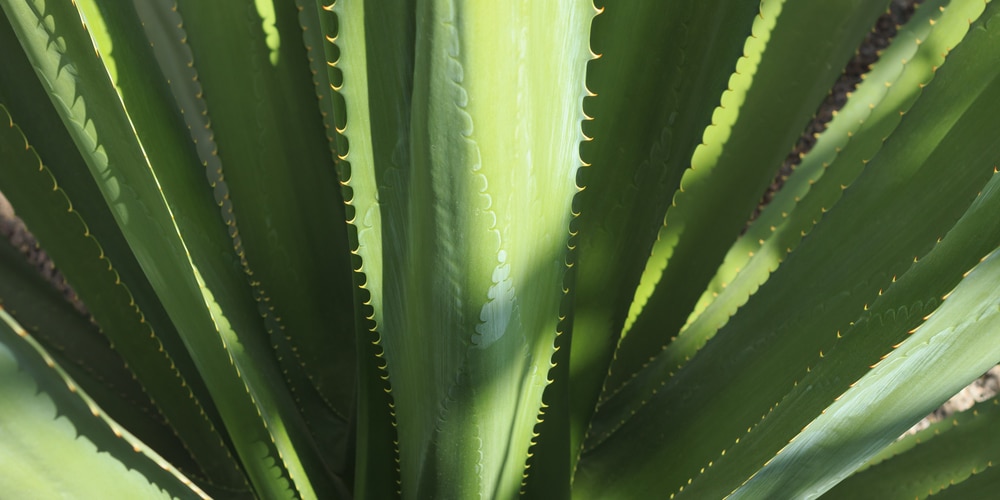
Aloe vera is indeed a succulent and a very useful one at that. It only needs bright light and irregular watering to live and thrive in your garden.
This succulent is best potted or put in the ground with well-draining soil, or a cactus mix if you have it. If you have them in a container, make sure there are several drainage holes so excess water can escape.
Aloe gel has excellent burn-healing characteristics. Take care of them well and they’ll fill the container or garden with little versions of themselves in no time.
Portulaca
Portulaca has several names, with moss rose being one of them. The groundcover plant puts out a veritable shower of dainty and colorful blooms as long as it gets lots of sunshine.
It’s recommended that you pot up portulaca or contain them in a garden bed as it grows and spreads very quickly. This plant can tolerate high heat and can go without watering for a day or two. Its root zone is shallow too, so you won’t need to water deeply.
Portulaca flowers can range from white to pink, orange, yellow and even deep lavender.
Hens and Chicks
The name Hens and Chicks should probably give you an idea of how this succulent looks, as it mimics how they appear in your garden.
The ‘mother hen’ is usually surrounded by ‘baby chicks’ that flock all over it. This succulent is very prolific and will produce a lot of babies in a short span of time. Come winter in zone 9 you probably won’t need to do anything else and there’s a high chance they’ll come back healthier than ever.
For growing Hens and Chicks you just need rocky, well-draining soil and a spot in your yard or garden that gets full sun.
Kalanchoe
Kalanchoes are the divas of the succulent world, with veritable blooms putting out a spectacular flower display!
Keep in mind though, that kalanchoes are soft succulents and must be brought in for the winter if you’re in zone 9. They don’t like to be exposed to the hot sun for long periods of time and usually do fine in the shade or with bright indirect lighting.
Wait for the soil to be completely dry before watering again. Kalanchoes will require regular deadheading of spent blooms if you want to see color all-year round.
Ice Plants
Ice plants are cool enough that they can thrive without issues in USDA zone 9. They’re hardy succulents that are commonly used as ground cover and can grow up to 6 inches and 4 feet high and wide.
The ‘ice’ in these succulents are not the leaves, but rather the daisy-like flowers that seemingly shimmer and shine as though they’re covered in fine snow. You don’t have to wait long to experience the cheery blooms as they will start producing come summer and fall season.
Bottle Tree
The Kurrajong Bottle Tree is an interesting specimen as it’s different from other low-growing succulents. It can grow as high as 50 feet and make for an attractive centerpiece in your home landscape.
Imported from Australia, the bottle tree is hardy in USDA zones 8 to 11. It doesn’t really care for a particular type of soil, but its one important requirement is that it should get full sun throughout the day.
Water your bottle tree sparingly as it doesn’t like standing in moist soil for too long.
Rosularia
Rosularia is often called Turkish stonecrop and is a rosette-forming succulent. It has a similar appearance to hens and chicks and may sport different-colored margins such as yellow, purple or red.
What sets this succulent apart from other sempervivums are the curious, funnel-shaped flowers that come out of the plant’s center. The flowers can have a variegated pattern depending on the variety but they are usually colored pink, purple, white or yellow.
In zone 9, expose your rosularia in full sun and water only when the soil is completely dry.
